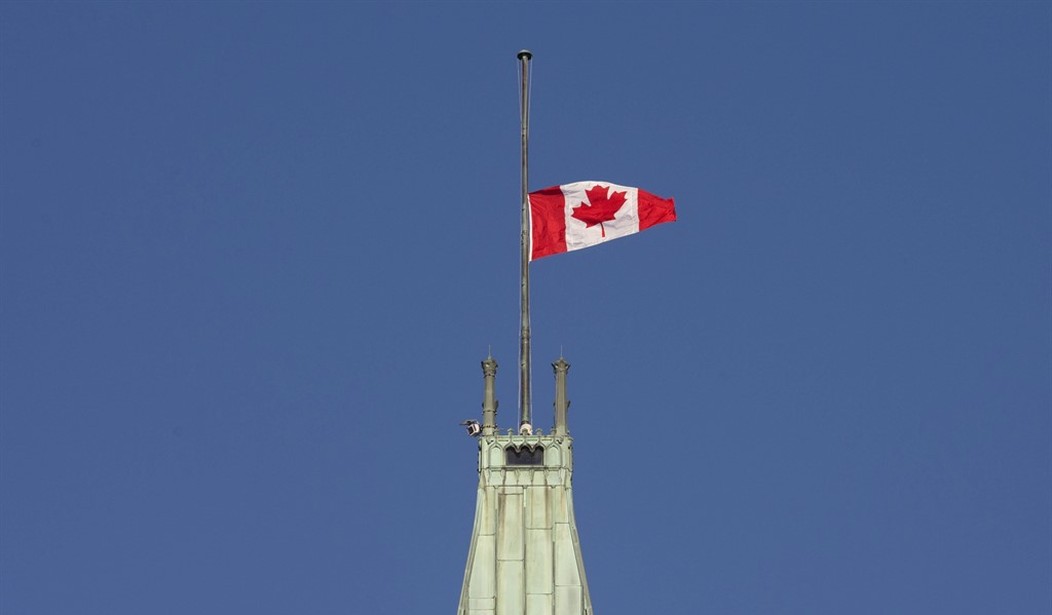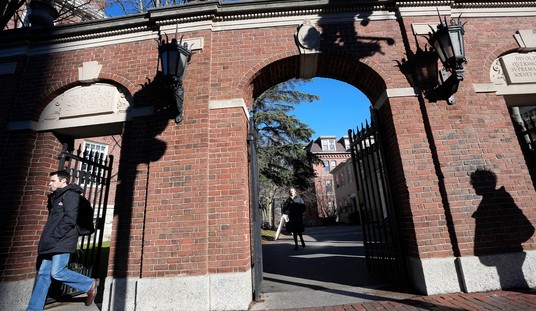Advocates of physician-assisted suicide and euthanasia often frame their position as driven by compassion and dignity. As the broad-strokes argument goes, people with terrible terminal illnesses -- living in pain, with no cure available -- should not be denied the choice to end their own life, at a time of their own choosing, on their own terms, with the help of a medical practitioner. From a human perspective, though suicide is rightfully an upsetting and disturbing cultural taboo, it is hard not to at least be somewhat sympathetic to these sorts of appeals. There is a moral and ethical case against sanctioning the taking of one's own life, even under the most dire and difficult circumstances. But the more potent argument, in my view, may be warnings against a 'slippery slope' on the matter, which has repeatedly been confirmed as creepy and quite real.
'Slippery slopes' are often dismissed as logical fallacies that claim one must oppose a, b, or c because x, y, or z might hypothetically happen next. In some cases, this is a weak form of argumentation, which deliberately declines to take on a, b, and c, on substance, punting the discussion to the realm of undesirable or bad next steps that may or may not arise down the line. On the subject of assisted suicide and euthanasia, however, the slippery slope is not hypothetical. Over and over again, once the door is cracked open, it gets flung wide open, sometimes resulting in the highly disturbing arrival of what might be described as suicide advocacy -- with an ever-lowering bar of what sorts of ailments should qualify people for permission or even encouragement to end their lives.
In Oregon, physician-assisted suicide is no longer limited to residents of the state, making it a death destination for others. Allegations of abuses have cropped up, and some patients seeking treatments have been offered death instead. A shift from focusing exclusively on terminally-ill patients suffering horrible pain with no prospects for recovery, to any number of other groups and conditions, is a phenomenon that has been documented in multiple jurisdictions where the practice is legalized. The Netherlands has been a pioneer in this area, leading to a stream of 'progressive' policy 'updates' that have systematically made choosing death -- or, arguably, death being chosen for you -- easier and easier:
Everyone in the Netherlands seems to have known someone who has been euthanised, and the kind of choreographed farewell...is far from unusual. Certainly, the idea that we humans have a variety of deaths to choose from is more familiar in the Netherlands than anywhere else. But the long-term consequences of this idea are only just becoming discernible. Euthanasia has been legal in the Netherlands for long enough to show what can happen after the practice beds in...As the world’s pioneer, the Netherlands has also discovered that although legalising euthanasia might resolve one ethical conundrum, it opens a can of others – most importantly, where the limits of the practice should be drawn. In the past few years a small but influential group of academics and jurists have raised the alarm over what is generally referred to, a little archly, as the “slippery slope” – the idea that a measure introduced to provide relief to late-stage cancer patients has expanded to include people who might otherwise live for many years, from sufferers of diseases such as muscular dystrophy to sexagenarians with dementia and even mentally ill young people.
Recommended
Papers published recently by the Dutch Euthanasia Commission reportedly revealed that a woman in her twenties was allowed to go ahead with assisted suicide based on psychiatrists' decision that her mental health condition was "insufferable," and it was therefore illegal to deny her life-ending drugs. The woman, who has not been identified, was sexually abused between the ages of 5 and 15, according to Britain's Independent...Multiple reports cited the documents published by the Commission as stating the post-traumatic stress disorder (PTSD) the woman suffered due to the abuse was "incurable," enabling the approval under Dutch law of her request for euthanasia. The Telegraph reports that the young woman was not an isolated case, and in fact, the rate of approved assisted suicides in the Netherlands for patients suffering from mental disorders has increased dramatically since the procedure was first made legal. In 2010, only two people were granted euthanasia due to "insufferable" mental conditions, while The Telegraph said that number rose to 56 in 2015.
A woman in her twenties was prescribed death over her 'incurable' PTSD. The slippery slope is real. Canada has recently emerged as ground zero for this debate, based on a series of alarming revelations and allegations. Writing in the New York Times, Ross Douthat paints a grim picture in a column entitled 'What Euthanasia Has Done to Canada:'
In recent years, Canada has established some of the world’s most permissive euthanasia laws, allowing adults to seek either physician-assisted suicide or direct euthanasia for many different forms of serious suffering, not just terminal disease. In 2021, over 10,000 people ended their lives this way, just over 3 percent of all deaths in Canada. A further expansion, allowing euthanasia for mental-health conditions, will go into effect in March 2023; permitting euthanasia for “mature” minors is also being considered...It is barbaric...to establish a bureaucratic system that offers death as a reliable treatment for suffering and enlists the healing profession in delivering this “cure.” And while there may be worse evils ahead, this isn’t a slippery slope argument: When 10,000 people are availing themselves of your euthanasia system every year, you have already entered the dystopia. Indeed, according to a lengthy report by Maria Cheng of The Associated Press, the Canadian system shows exactly the corrosive features that critics of assisted suicide anticipated, from health care workers allegedly suggesting euthanasia to their patients to sick people seeking a quietus for reasons linked to financial stress. In these issues you can see the dark ways euthanasia interacts with other late-modern problems — the isolation imposed by family breakdown, the spread of chronic illness and depression, the pressure on aging, low-birthrate societies to cut their health care costs.
Here is one dystopian vignette from the Associated Press report Douthat cites, published in August:
Alan Nichols had a history of depression and other medical issues, but none were life-threatening. When the 61-year-old Canadian was hospitalized in June 2019 over fears he might be suicidal, he asked his brother to “bust him out” as soon as possible. Within a month, Nichols submitted a request to be euthanized and he was killed, despite concerns raised by his family and a nurse practitioner. His application for euthanasia listed only one health condition as the reason for his request to die: hearing loss. Nichols’ family reported the case to police and health authorities, arguing that he lacked the capacity to understand the process and was not suffering unbearably — among the requirements for euthanasia. They say he was not taking needed medication, wasn’t using the cochlear implant that helped him hear, and that hospital staffers improperly helped him request euthanasia. “Alan was basically put to death,” his brother Gary Nichols said. Disability experts say the story is not unique in Canada, which arguably has the world’s most permissive euthanasia rules — allowing people with serious disabilities to choose to be killed in the absence of any other medical issue. Equally troubling, advocates say, are instances in which people have sought to be killed because they weren’t getting adequate government support to live. Canada is set to expand euthanasia access next year, but these advocates say the system warrants further scrutiny now.
When it's cheaper and 'easier' for a government to end citizens' lives than to help them keep living, and euthanasia is legal, abuses are inevitable. And cases that may initially be considered scandalous abuses become more commonplace. Here's another fresh example, via the CBC:
Canada offers disabled veteran “aid to die” when she asks for a stairlift pic.twitter.com/Xb1PYmSZ2w
— End Wokeness (@EndWokeness) December 4, 2022
A paraplegic former member of the Canadian military shocked MPs on Thursday by testifying that the Department of Veterans Affairs offered her, in writing, the opportunity for a medically assisted death — and even offered to provide the equipment. Retired corporal Christine Gauthier, who competed for Canada at the 2016 Rio de Janeiro Paralympics and the Invictus Games that same year, spoke before the House of Commons veterans committee and agreed to provide a copy of the letter. "With respect to me, I have a letter in my file, because I had to face that as well," said Gauthier, referring to the debate about veterans being offered the option of medical assistance in dying (MAID). "I have a letter saying that if you're so desperate, madam, we can offer you MAID, medical assistance in dying," said Gauthier who first injured her back in a training accident in 1989. Testifying in French, she said she has been fighting for a home wheelchair ramp for five years and expressed her concerns about the assisted dying offer in a recent letter to Prime Minister Justin Trudeau. "I sent a letter to Prime Minister Trudeau and that they [Veterans Affairs] offered me MAID and would supply equipment," said Gauthier.
The Canadian government did not offer her a chairlift to make her life easier. They did offer this 52-year-old the option of death at the hands of a doctor. Ms. Gauthier's story is appalling and outrageous, so Prime Minister Justin Trudeau went through the motions of calling it "absolutely unacceptable," but the news account goes on to add that Trudeau did not explicitly back away from his government's plan to further expand "medically-assisted dying in Canada to include those with mental illness," which "could become an option next spring." When the value of life is diminished, things can get very dark, very rapidly. In Canada, these practices were first legalized in 2016. The 'culture of death' slope slipped quickly: "The law was later amended to allow people who are not terminally ill to choose death, significantly broadening the number of eligible people. Critics say that change removed a key safeguard aimed at protecting people with potentially years or decades of life left." And today, "any adult with a serious illness, disease or disability can seek help in dying."























Join the conversation as a VIP Member